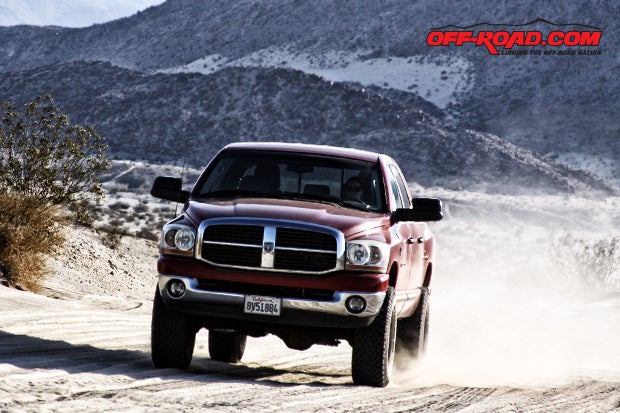
Big tires and bouncy roads will eat up ball joints faster than a junkyard dog devours its steak. After logging about 10k miles with 37-inch tires and doing a share of towing, hauling and off-roading with our own diesel Dodge Ram Truck, we noticed some excessive tire wear. The inside lug on the front tires were wearing down fast, much faster than the rest of the tire tread. The wheel alignment on the truck was good, so that wasn’t the problem. Upon further inspection we noticed the front axle knuckles had a lot of play. A second inspection at a local alignment shop confirmed that the ball joints needed to be replaced.
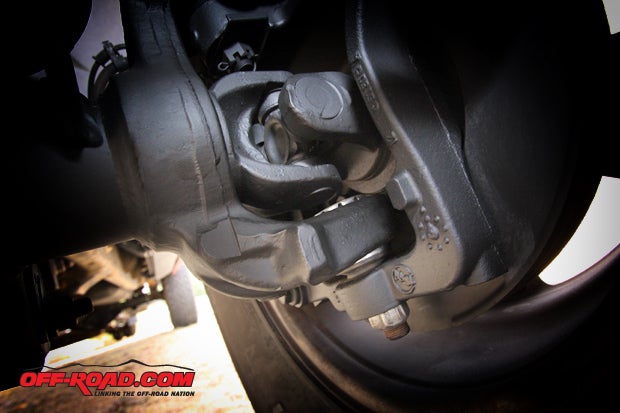
Similar is the story of many 4x4 owners with solid axle rigs made after 1992. Ball joints just don’t last as long as kingpin setups found on early Dana 60 axles. The added weight and forces put on the axle assembly by large off-road tires and heavy loads raises havoc on OEM ball joints. Needing something stronger that would support the weight of a diesel engine, large tires and overcome the added jounce from off-road terrain, we called on the heady-duty axle experts at Dynatrac for advice.
DYNATRAC HIGH PERFORMANCE AXLES & COMPONENTS
Dynatrac has been in business for over 20 years, building high-performance axles with four-wheel-drive enthusiasts in mind. They are experts in 4x4 heavy-duty axles like Dana and AAM found on the Jeep Wrangler, Ford Super Duty and Dodge Ram Trucks.
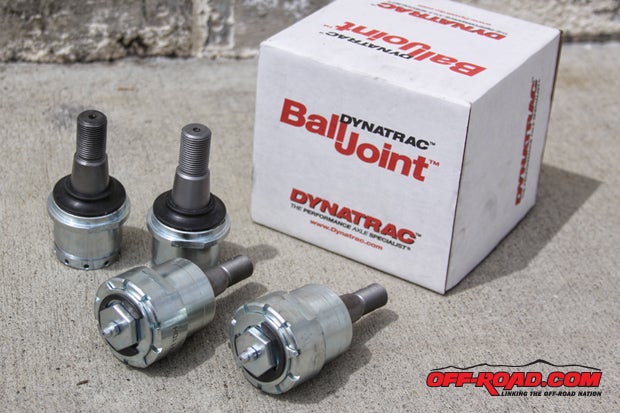
With years of experience working on kingpin and ball joint equipped axles, Dynatrac noticed room for improvement on the 9.25 AAM Dodge diesel truck axle. Dynatrac developed the Pro Steer Ball Joints as a heavy-duty upgrade to address the OE ball joint’s shortcomings. The Pro Steer Ball Joints provide higher strength, longer life and once installed can be rebuilt without special tools. This was exactly the upgrade we needed.
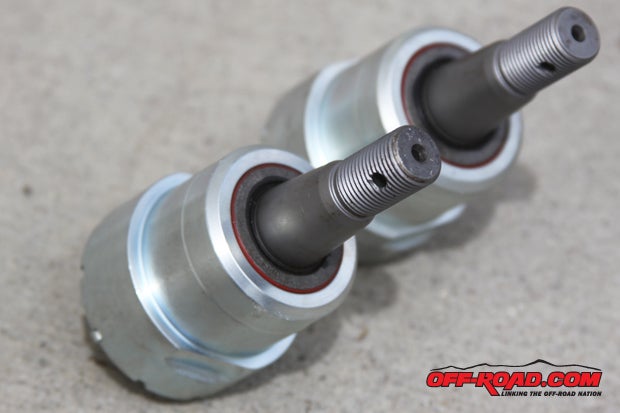
Dynatrac heavy-duty ball joints are constructed from heat-treated, high-strength billet steel. Their stems are made from strong, heat-treated chromoly steel. The Pro Steer Ball Joint internals include MIL-spec, heat-treated precision-ground stainless-steel ball, Teflon-coated internal wear points and leak-proof seals to help keep dirt and contaminants out. Dynatrac Ball Joints are designed and made in the USA.
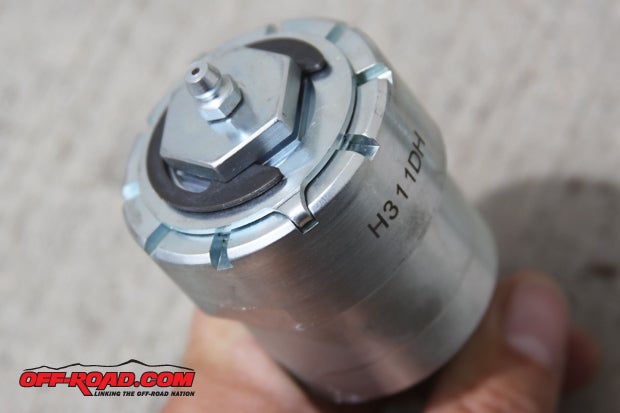
All this added strength and technology make the Dynatrac heavy-duty ball joints a better fit for trucks equipped with large off-road tires and those that see their share of hauling and towing. We ordered up a set to give them a go.
INSTALLATION
The Dynatrac Pro Steer Ball Joints are a hot commodity these days. As soon as we got a set, we took our Dodge Ram 2500 over to Off Road Warehouse (ORW) in Escondido, Calif., to have them installed. ORW has worked on our 4x4s for over 10 years and we’ve been very happy with their work and customer service. We worked with Justin Mitchell from ORW on this project.
The job can be done in your own garage if you have the right tools and skills to perform the work. A service manual will help with wheel, brake and axle disassembly. Dynatrac also offers step-by-step instruction with their Pro Steer Ball Joint kit to speed up the installation process and make sure it’s done right the first time.
The following is an overview of the installation process for the Dynatrac Pro Steer Ball Joint kit on a 2003-2010 Dodge Ram Truck 2500 diesel 4x4.
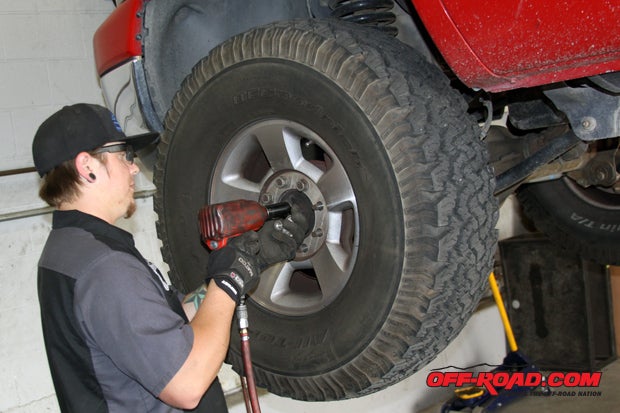
The first thing we did was get the truck on a lift so the 37-inch BFG All-Terrain tires could come off the truck. Complete access to the wheel assembly is needed to replace the AAM 9.25 ball joints.
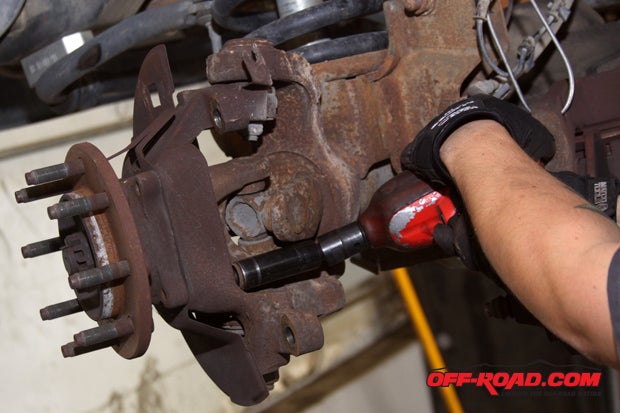
Next was removing the wheel hub assembly, brakes, tie rod and all other miscellaneous hardware as outlined in the service manual. Our truck spent some time in Texas and Louisiana early in its life, so the surface rust on the housing made the axle disassembly harder than most. Using some Liquid Wrench did help loosen those rusty bolts.
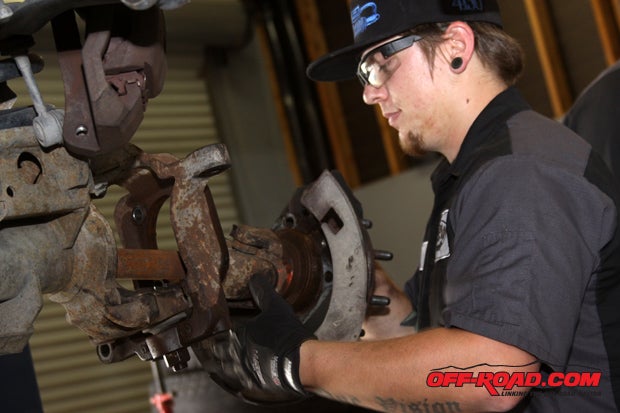
Once the axle was free, it also needed to come out. Using his off-road garage skills, Justin was able to remove both axles from the housing without damaging the seals or spilling gear oil.
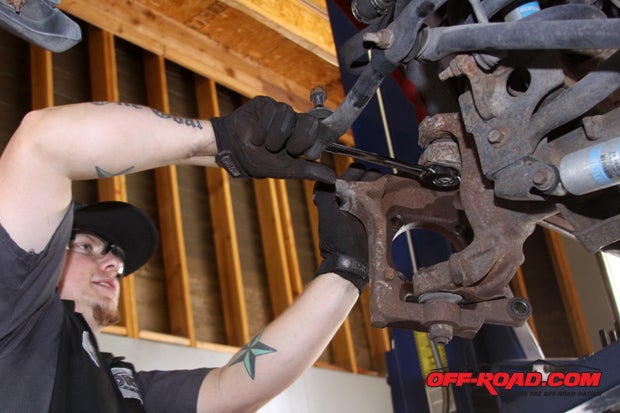
With the axle and hub assembly out of the way, we now could work inside the knuckle. Both the top and bottom ball joint nuts needed to be loosened to remove the knuckle. It’s recommend that the lower ball joint nut only be loosened until three to five threads are still on the nut to prevent it from falling off and busting your big toe. No joke, those knuckles are heavy.
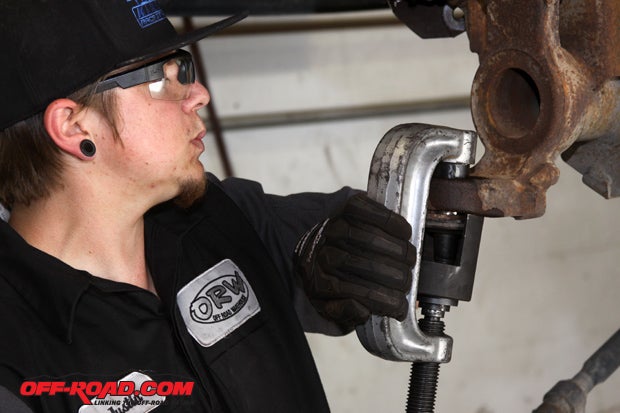
The ball joints on the AAM 9.25 axle have a tapered stud that firmly seats them in the knuckle bores, making it hard to get them out without force. To help move things along, a 5-lb. sledgehammer can be used to hit the bottom forging, as well as the ball joint stud to separate from the knuckle. The ball joints can also be removed using a Miller Ball Joint press kit as shown above.
After removed, we were able to better compare the difference in design and size of the Dynatrac Ball Joint and OEM parts.
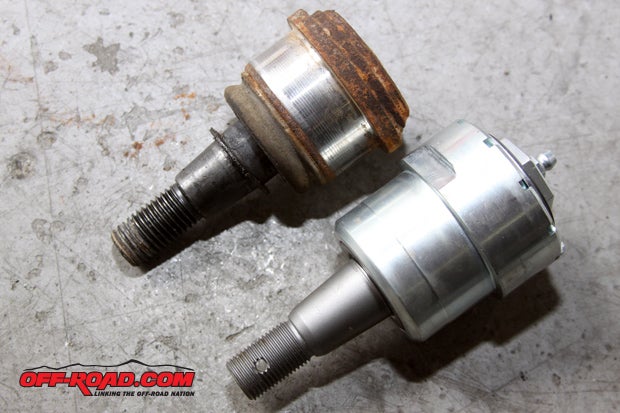
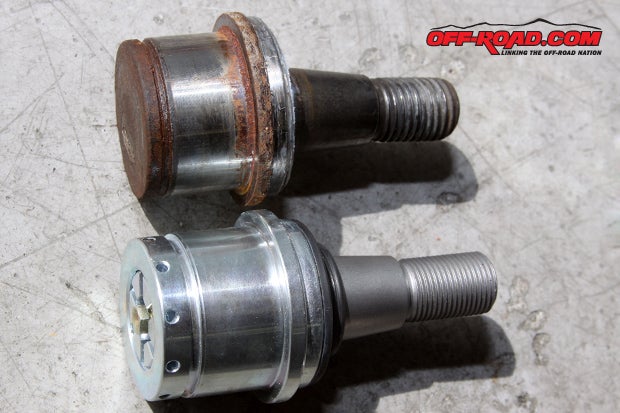
Once all of the ball joints have been removed, the knuckle bores needed to be cleaned. According to Dynatrac, cleaning the end forging bores is extremely important to make sure the ball joints seat correctly. This can be done using a wire wheel, Scotch-Brite or 100-grit sandpaper, with a final spray down using brake cleaner.
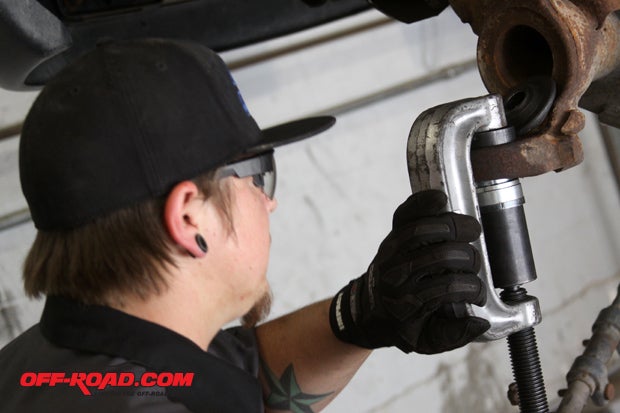
After the knuckles and end forgings had been cleaned, anti-seize was applied on all the ball-joint bodies. The anti-seize helps prevent galling and damage when pressing in. Dynatrac strongly recommends using the Miller tool kit in conjunction with the Dynatrac Ball Joint installation kit during the process.

The lower ball joint is installed first, using extra caution when pressing in to avoid damage to seal (left). Only the rim of the ball joint should be in contact with the ball joint press. Next we installed the upper ball joint (right). The E-clip was removed before pressing in to avoid damage. After the upper ball joint was been seated, the E-Clip goes back in place.
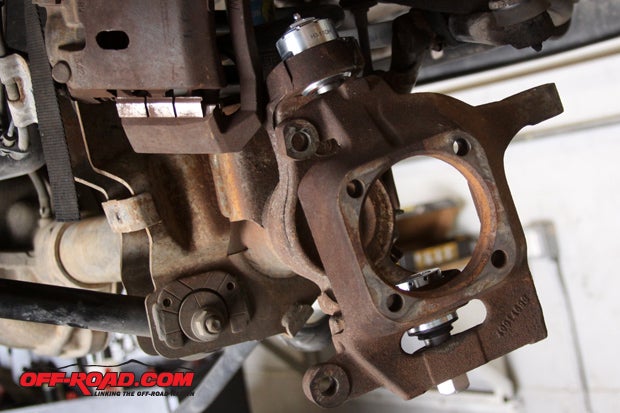
With both bottom and upper Dynatrac Pro Steer Ball Joints in place, the knuckle was ready go back on. The knuckle is placed into the end forging and lightly screwed on using the ball joint nuts, preventing the knuckle from sliding out. A 1-1/8 socket and a 15/16 socket are required to tighten the ball joint nuts.
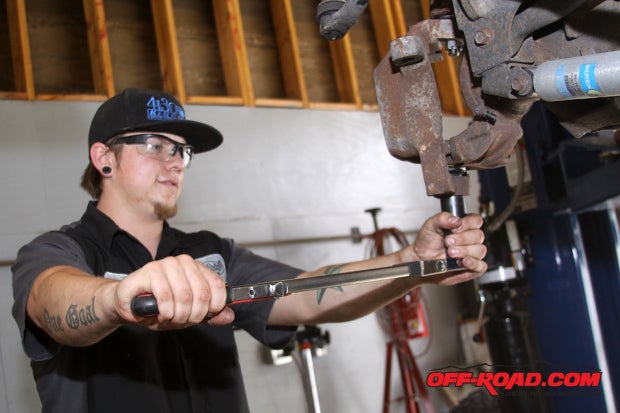
Once the knuckle is lightly fastened, Dynatrac instructs to tighten the upper ball joint first. The upper ball joint has a shaft that plunges, which means that the upper ball joint nut will pull the upper ball joint shaft into the knuckle as it is tightened. This will then pull the lower ball joint into the bottom of the knuckle. After the upper ball joint nut has been tightened, the lower ball joint nut can be tightened.
If it sounds a little confusing, just follow the tightening sequence and torque specs recommended by Dynatrac and everything should be good:
1ST Pass
*Upper ball joint to 35ft./lbs.
*Lower ball joint to 70ft./lbs.
2ND Pass
*Re-torque upper ball joint to 70ft./lbs., then rotate the castle nut to the next available slot. Insert cotter pin and fold the tab over.
*Re-torque lower ball joint to 140/160ft./lbs.
Reassembly of axle, brakes, tie rod and wheel as noted in service manual complete the job. If your AAM axle housing has noticeable surface rust like ours did, now may be a good time to tackle it. A wire brush does wonders at removing surface rust, dirt and grime. Clean it good, then finish it with a nice coat of black paint.
FINAL THOUGHTS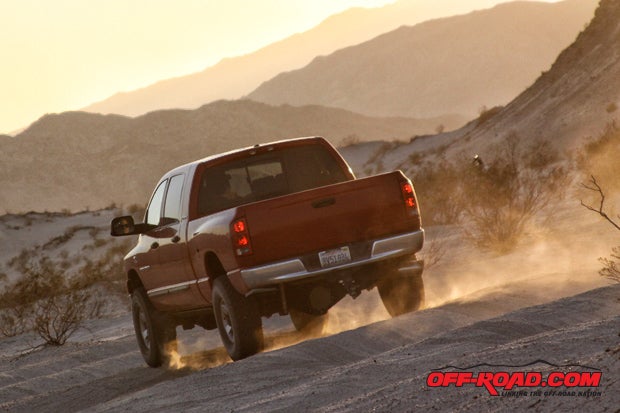
We are very impressed with the Dynatrac Pro Steer Ball Joints. As soon as we drove the truck away from Off Road Warehouse we could feel the difference. The steering felt a lot tighter than when we drove it in. We’ve logged just over 1,000 miles on the Dodge Ram 2500 Mega Cab since first installing the Dynatrac ball joints and they still feel great. They’ve settled in nicely and continue to give the truck a much more stable driving experience, both on and off-road.
We tackled some curvy mountain roads frequented by speed junkies on two and four wheels, and surprisingly, the truck was able to carve the two lane with much more confidence than before. The wheels felt planted going around curves and while climbing. When hauling or towing a heavy load, the truck doesn’t wander anymore. It feels true going down the road loaded or unloaded. In addition, we haven’t noticed any more uneven tire wear after installing Dynatrac Ball Joints and rotating tires.
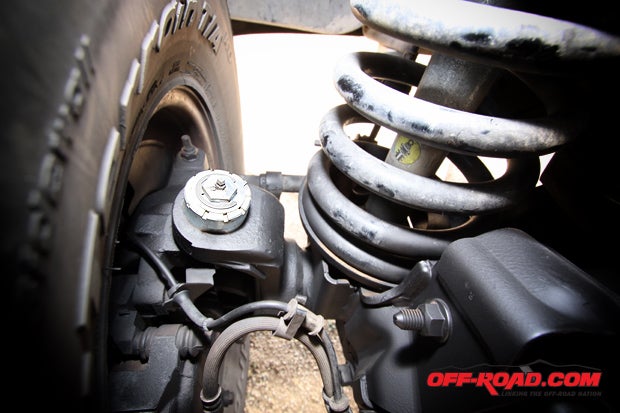
We are truly impressed and happy with our decision to install Dynatrac Pro Steer Ball Joints over OE replacements. They are definitely well engineered and built with heavy-duty use in mind. The fact that the internals are designed to outperform an OE ball joint really gives us confidence when hauling tail down a dirt road or hauling a load. We also like that they are rebuildable and serviceable. This feature alone will save us time and money next time around.
In our opinion, the Dynatrac Pro Steer Ball Joints are well worth the investment—adding function and peace of mind for those traveling down dusty roads, towing or hauling with their Dodge Ram Trucks. If you own a Jeep or Super Duty, Dynatrac can also help upgrade your axle ball joints.
SOURCES
Dynatrac
714-596-4461
http://www.dynatrac.com/
Off Road Warehouse (ORW)
800-341-7757
http://www.offroadwarehouse.com/


 Your Privacy Choices
Your Privacy Choices